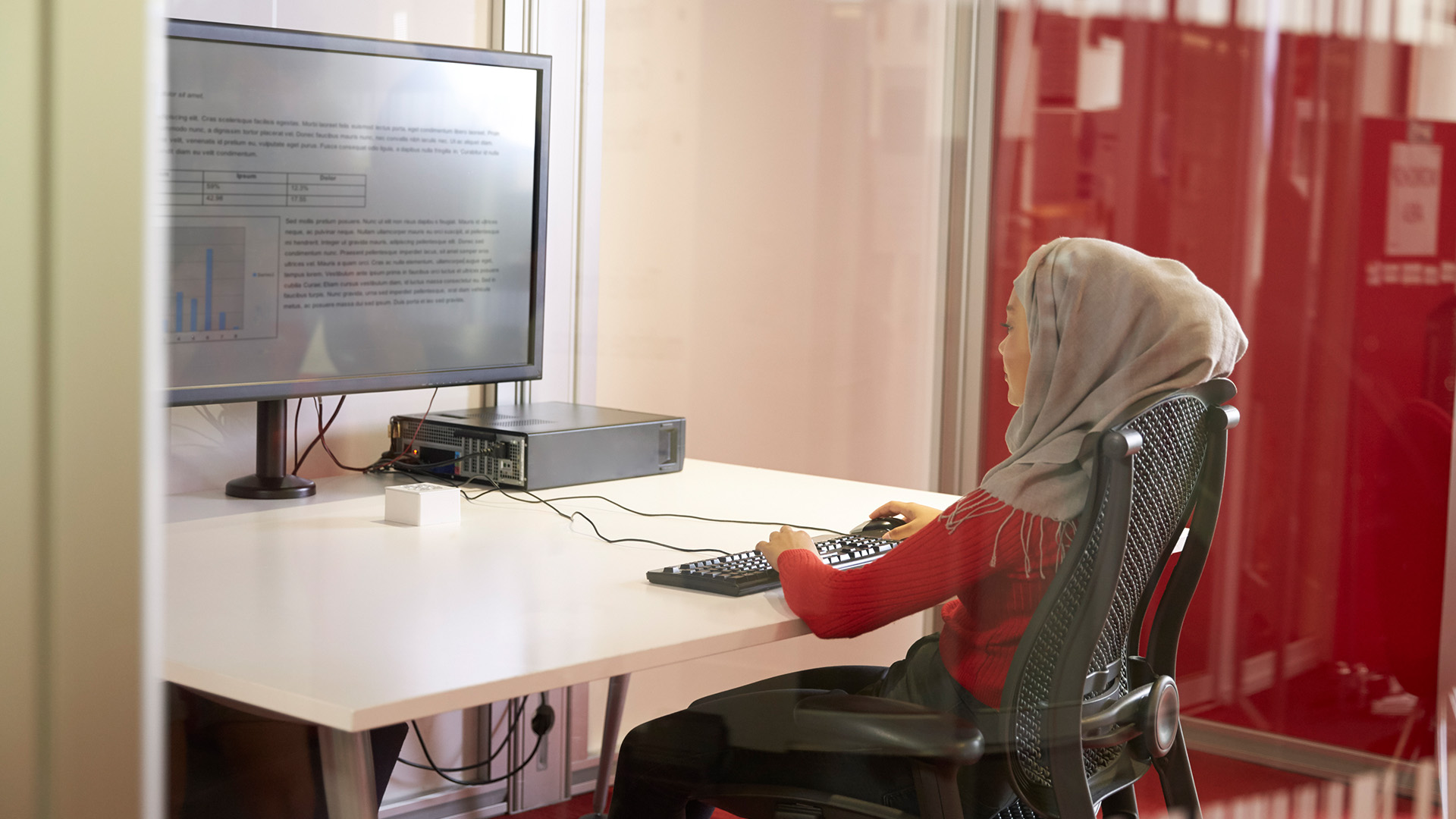Behind the Scenes of CART Captioning: The Technology and Skills Behind the Service
Technology - Professional Services - CART Captioning - Food for thought

Behind the Scenes of CART Captioning: The Technology and Skills Behind the Service
Communication Access Realtime Translation (CART) captioning is a powerful assistive technology that provides live transcriptions of spoken words into written text.
This technology is primarily used in live events, such as public speeches, conferences, and even classrooms, to make spoken content accessible to individuals who are Deaf or Hard of Hearing.
One of the most significant benefits of CART captioning is that it provides real-time transcription, allowing people who are deaf or unable to hear to understand the presentation as it happens!
In this piece we dive in to the behind the scenes of CART Captioning and explore the technology and skills behind the service.

Enhancing Accessibility and Engagement
Realtime Captioning, also known as CART (Communication Access Realtime Translation) Captioning, is a valuable tool to enhance the accessibility of various events, conferences, and presentations for all individuals, particularly those with hearing impairments. By providing live captions, the audience can follow the speech in real-time and not miss any essential information and in turn increase comprehension and engagement.
Studies have found that captioning can significantly improve comprehension and retention rates. According to a survey executed by the National Center for Accessible Media (NCAM), viewers spend about 40% more time watching captioned video. Captions can also increase word-for-word recall by 7.3%!
Realtime Captioning is a worthwhile investment as it can help presenters to connect with a larger audience and improve the overall experience for all participants.

Exploring the Technology Behind It
The technology behind CART captioning involves specialized tools and techniques that enable a CART captioner to translate spoken language into written text in
real-time, accurately. CART captioners use a special phonetic keyboard or stenography methods to capture and transcribe speech.
A phonetic keyboard is a modified QWERTY keyboard that allows CART captioners to type phonetic symbols instead of traditional letters and numbers. The phonetic symbols represent sounds rather than letters, which enables CART captioners to capture speech quickly and accurately.
Stenography, however, is a shorthand method that involves pressing multiple keys simultaneously to create combinations of sounds and words. This method is also used by court reporters and other professionals who must transcribe speech quickly and accurately.
Once the CART captioner has captured the speech using either method, the text is transmitted to the recipients in real-time via a screen, laptop, or other devices. This process is sometimes called open captioning, real-time stenography or captioning.
Overall, the technology behind CART captioning is complex but highly effective, enabling CART captioners to provide an essential service that enhances the accessibility of events, conferences, and presentations for people with hearing or language difficulties.

Equipment and Preparation: The Essential Components of CART Captioning
To become a CART captioner, one must have specific skills and equipment. First, they’ve got to have a strong understanding of phonetics and stenography methods. CART captioners must be able to type quickly and accurately on a steno machine or keyboard. They must also have excellent listening skills to transcribe spoken language in real-time and accurately.
CART captioners require a computer and steno machine or voice writing software and must also have Computer-Assisted Transcription (CAT) software to help with their work. When providing on-site CART, additional hardware is necessary to connect media sources, captions and any third party teams.
This includes access to a power supply, an extension cord, a 2-prong to 3-prong ground cord adapter, a portable storage device (flash drive), a chair or table, and tape for taping down cords.
Headphones may also be required for audio input. If outputting via the internet while on-site, internet access is necessary, and a wireless connection device may also be required. An iPad, tablet, or netbook may also be essential to display the text to individuals or a large screen.
To prepare for a CART captioning job, you can take courses in phonetics and stenography, practice transcribing in real time, and become familiar with CART software. CART captioners may also benefit from classes or training on specific topics, such as medical or legal terminology, to be better prepared for captioning events or conferences in those fields.

What is Remote CART Captioning?
Remote CART captioning is an effective solution when the consumer and the captioner are in different locations.
The CART captioner will need a computer, a steno machine or voice mask, and CAT software. The consumer will need a computer or mobile device, an internet connection, and a URL or link from the CART captioner where the text may be viewed.
The audio can be sent to the CART captioner via phone lines or Voice over Internet Protocol (VoIP), and the captioner will translate the speech to text in real-time.
For remote CART captioning, the CART captioner should have a backup power source, computer, and steno machine in case of equipment failure. The consumer should have speakerphones with or without an extension microphone, and a speaker may wear a wireless microphone with the speakerphone.
In a large group setting, the consumer will send the audio via Skype or a similar platform by connecting the audio mixer board output directly to the mic port of the computer housing your web conferencing tool. The captioner should also have headphones to listen to the audio.
Remote CART captioning requires high technical proficiency and attention to detail. The captioner should have a reliable internet connection, and the captioner and the consumer should have appropriate hardware and software. With the proper preparation and equipment, remote CART captioning can be an effective solution for people who need real-time access to spoken content.
Conclusion
CART captioning has revolutionized communication for may across the globe! The behind-the-scenes technology and skills required for CART captioning are complex, but with Ad Astra’s professional services, anyone can benefit from accurate and timely captions.
Ad Astra’s CART captioning services utilize state-of-the-art technology and experienced professionals to provide real-time, remote CART captioning that can be displayed on a variety of web platforms.
The necessary hardware, such as a computer and a steno machine, can be easily obtained, but the skills required for accurate CART captioning require extensive training and experience.
Choosing Ad Astra for your CART captioning needs ensures that you have access to the latest technology and skilled and experienced professionals dedicated to providing the best possible service!
.png?width=500&height=483&name=bot%20(1).png)




